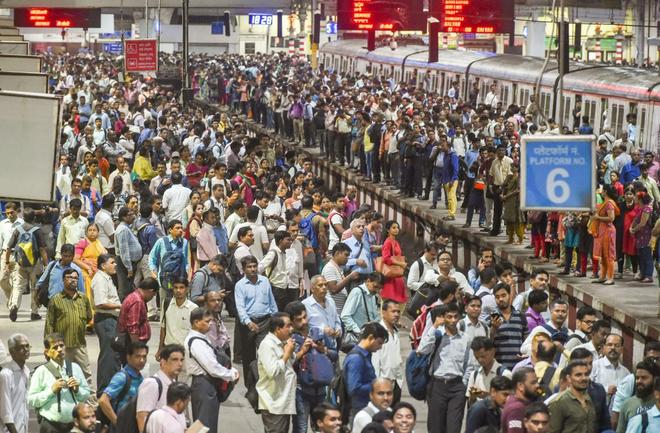
KATOWICE: According to a UN analysis, India will have 675 million urban residents in 2035, ranking second behind China’s one billion, while the world’s urban population is expected to increase by another 2.2 billion people by the year 2050, as a result of the COVID-19 epidemic. The COVID-19 pandemic only briefly slowed down urbanisation, according to the United Nations-Habitat World Cities Report 2022. By 2050, the world’s urban population is expected to increase by an additional 2.2 billion people, according to the report.
According to the report, India’s urban population is expected to reach 675,456,000 in 2035, up from 483,099,000 in 2020, 542,743,000 in 2025, and 607,342,000 in 2030. According to the report, 1.05 billion people would live in urban areas in China in 2035, while it will be 2.99 billion people for Asia and 987,592,000 people in South Asia. According to the research, very large economies like China and India account for a sizeable portion of the global population, and their development paths have had a significant impact on global inequality. According to the report, China and India in Asia had fast economic expansion and urbanisation over the past 20 years, which significantly decreased the number of people living in poverty. The urban population is expected to increase from 56 per cent of the world total in 2021 to 68 percent by 2050, according to the report, as existing urban populations continue to grow naturally due to increased birth rates, particularly in lower income countries.
During the early stages of the COVID-19 epidemic, a significant number of people fled from major cities to the supposed safety of the countryside or smaller towns. This was a temporary response that will not change the rate at which urbanisation is progressing throughout the world. Cities are once again attracting people in pursuit of jobs, education, and training, or taking refuge from conflict, despite the virus’s higher prevalence in urban areas and the economic hardships caused by the pandemic.
The paper stated that, although degrees of urbanisation are unequal and growth is sluggish in many high-income nations, cities are here to stay and the future of humanity is undoubtedly urban. According to Maimunah Mohd Sharif, UN Under-Secretary-General and Executive Director of UN-Habitat, urbanisation is still a powerful mega-trend for the 21st century. There have been numerous challenges which were exacerbated by the COVID-19 pandemic. However, there is hope that COVID-19 has given us the chance to rebuild in a different way, so that our children may inherit an urban future that is more inclusive, greener, safer, and healthier. The governments must take proper measures and show the necessary level of commitment.
According to the research, urban poverty and inequality continue to rank among the most difficult and complex issues that cities must deal with. Notable examples include the notoriously overcrowded slums in Mumbai, India; Nairobi and Rio de Janeiro; chronic homelessness in London; and persistent concentrated poverty in Baltimore, United States. The report acknowledged the problem of climate change and noted that cities, particularly those in warm climates or low-lying coastal areas, face existential threats as a result of the dangers and effects of climate change and extreme weather events, such as increased heatwaves in Delhi, India, and widespread flooding in Jakarta, Indonesia, and Durban, South Africa.
Additionally, several governments all over the world implemented lockdowns and mobility restrictions in reaction to the pandemic, which had a significant positive impact on the quality of the air and water. In highlighting the effects of transportation patterns during the COVID-19 epidemic, it was noted that people who had previously been engaged in active and public transportation had begun to choose private vehicles in several nations, such as India. These patterns suggest that private motorised vehicles may continue to dominate urban mobility in the absence of safe, economical, and dependable public transportation services. According to the report, if this trend continues, it might exacerbate existing difficult problems like air pollution, traffic, and road safety.

